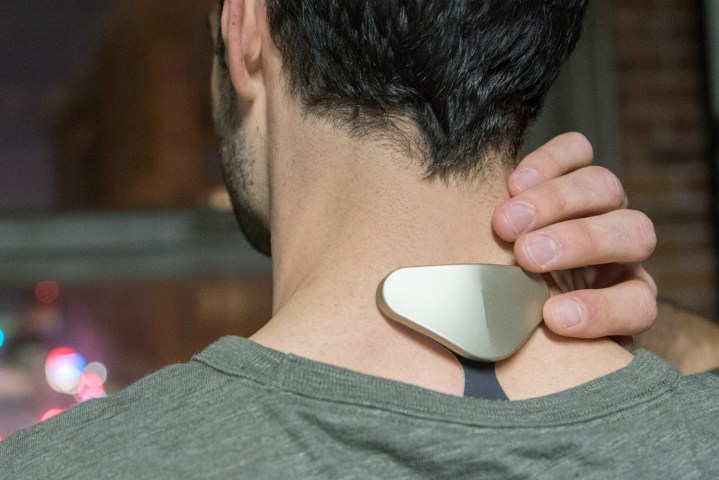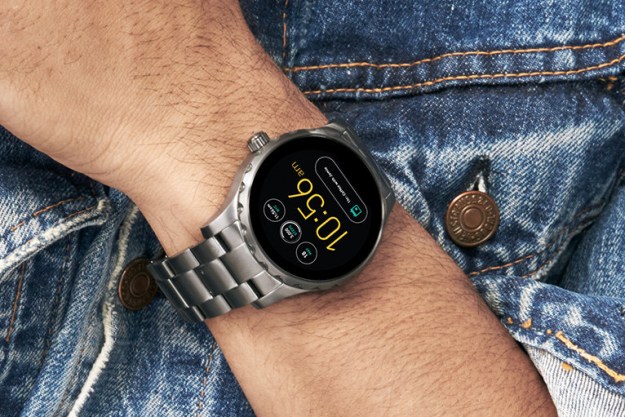
The new Thync module attaches to the back of your neck, using disposable electrode pads, and is controlled by a smartphone app. There are two modes, Thync Deep Relax and Thync Deep Sleep. It uses low-level electrical stimulation patterns to manipulate your body into lowering stress, improving your mood, and boosting the quality of sleep.
More: Our review of the original Thync
We met with Thync CEO Isy Goldwasser last year for a sneak preview of a device called the Thync Relax. The Thync Relax Pro takes essentially the same neurostimulation app modes we tried at the time, and links them to a more compact wearable module that’s closer to the original design. Goldwasser told us at the time that most people using Thync chose the programs that relaxed them over those that boosted energy and focus. Making a Thync product dedicated to that makes sense.
If you’re concerned about strapping an electrical device to your head and letting it send some stimulating waves through your brain, don’t worry — the technology is safe and has been used for many years, with almost no side effects at all. In our experience with Thync and the prototype Thync Relax, we found that it really works.
Thync has revised its pricing strategy with the Relax Pro. You pay $150 up front for the device, and then $30 each month to access the app and receive the Thync Pad packs. These contain the electrodes that make the Thync work, and are really only good for one or two uses before they need replacing.
We’re confirming the release date, and where it’ll be available. We’ll provide an update here when we have all the details.
Editors' Recommendations
- Xiaomi’s newest wearables may make you want to ditch your Apple Watch
- Your Pixel 7 is about to get a whole lot less buggy — here’s why
- Apple’s iPhone 12 probably has better picture quality than your TV
- Built on a fast SSD, LaCie’s computer-free backup drive just got much better




